Neo-Eocene (Malmö)

Installation shot
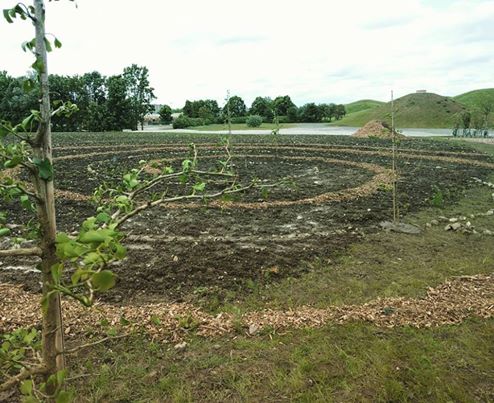
Installation shot with Ginkgo in foreground
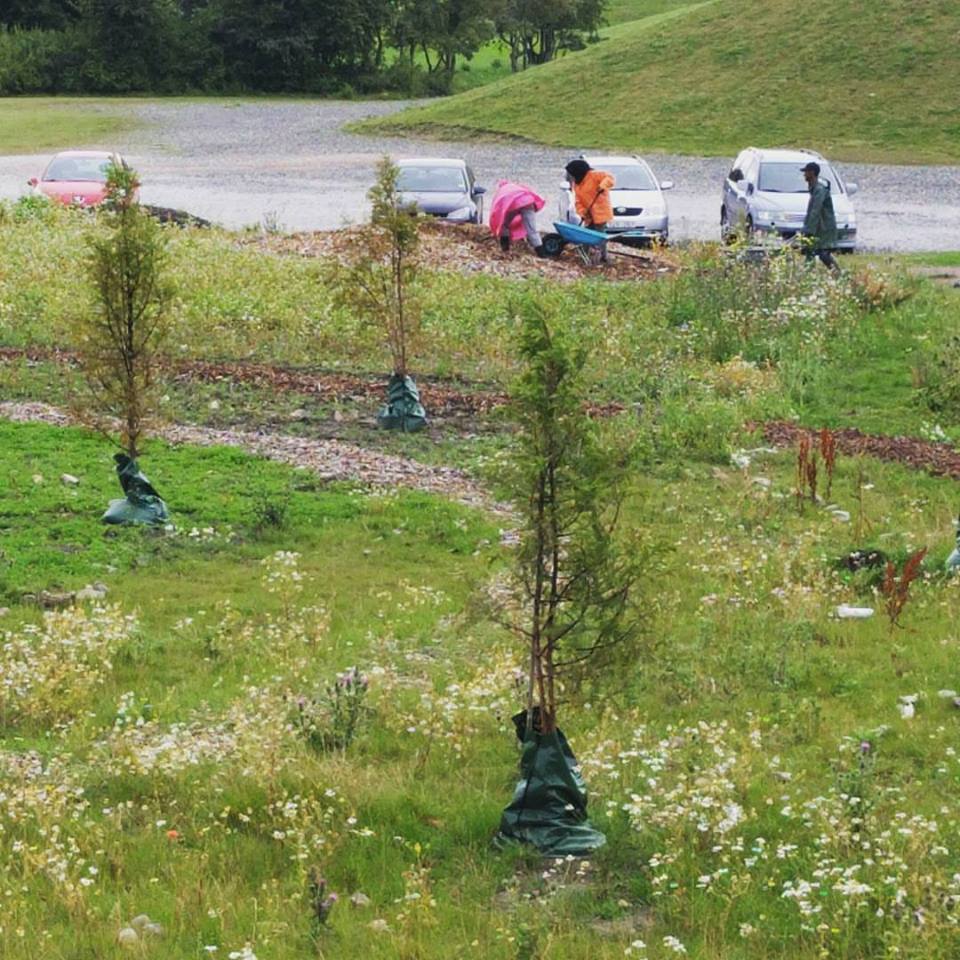
Gingkos with watering bags
Thanks to the untiring efforts of Marek Walczak, Amanda McDonald-Crowley, Robert Ek, Lars Qvint, Hvilan Utbildning and the rest of the amazing crew at Agrikultura 2017, the Neo-Eocene experiment is getting a new instantiation in Malmö Sweden.
This time it takes the form of Gingko biloba trees–living fossils arranged in a counterclockwise spiral, the topology of the hurricanes in the northern hemisphere that will become much more prevalent and severe under the increasingly unstable conditions of anthropogenic global warming. Ginkgo was prehistorically native to northern Europe during distant geologic ages where the climate was much warmer than what we have come to think of as normal. But normal too is a thing of the past and Ginkgo may once again take its place in the Nordic forest as the more cold-adapted species wither and die from the unaccustomed heat or the ravages of strange new pests.
The spiral also references the holding patterns of aircraft approaching the nearby Copenhagen airport, exuding their planet-warming exhausts into the puffy clouds overhead, while those onboard stow their tray tables and raise their seats into the upright position for landing or do the opposite as they settle into enduring the wearisome banality of their coming journey. The spiral of prehistoric plantings will be visible from the air and as the shadows of the plane crosses it, perhaps some on board will spare a thought for the part they are playing in nudging the Nordic climate towards its uncertain new future. With increasing thermal instability, droughts and other weather extremes naturally follow and with that will likely come upheavals in the social sphere, if not in Malmö, then elsewhere, and the spiral recalls the emergency landing procedure used in war zones–a rapidly descending corkscrew approach (the downward spiral) to make the aircraft less of a target for ground fire.
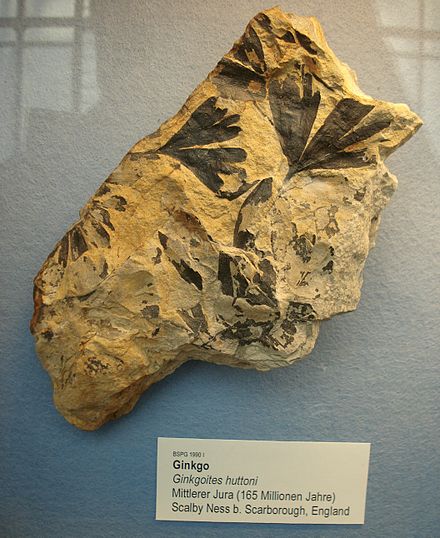
fossil Ginkgo leaves from the UK Jurassic formations
There is broad scientific consensus that we are well into a period of rapidly escalating, human-induced climate change. But how high will temperatures go? Some models predict that global temperatures could increase by as much as 5 degrees C. The last time this happened was during the Eocene Thermal Maximum, some 55 million years ago. This was long before our own species came along, so it is unclear how we will be able to adapt to the coming extremes. Back in those days, palms and alligators flourished as far north as what is now Alaska and the Canadian Arctic. Nordic Europe too basked under a seething quasi-tropicality, its flora reminiscent of what one might currently expect in the warmer parts of Asia or the American southeast with many strange conifers of genera now extinct or much reduced in diversity. Of those few tree species that have survived into the present day, rescued from their far-flung refugia as botanical curiosities or living fossils to grace our arboretums and botanical gardens, the Ginkgo is perhaps the most iconic, as it has been growing on earth since the age of the dinosaurs and contains within it the genetic wisdom to thrive in atmospheric conditions of elevated carbon dioxide. It is easy to forget this botanical oddity once comprised vast forests in what we know think of as frigid, Nordic zones and in those torpid prehistoric days, it was not an anomaliy but a native constituent of the area;s forests. If anthropogenic warming threatens to bring back Eocene temperatures should we bring back the Eocene's trees? That is the question posed by this work.
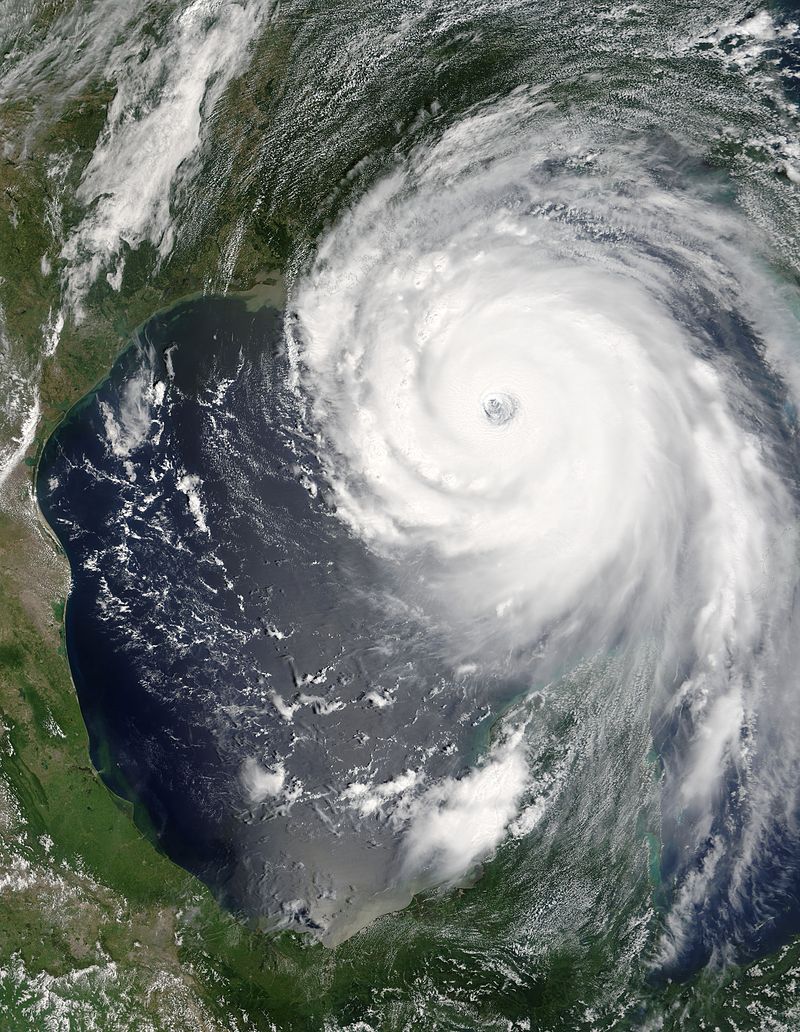
Hurricane Katrina
The spiral also appears in one of my favourite films 'Vertigo' by Hitchcock, which is of course about time travel, at least conceptually, and contains a lot of spirals (Kim Novak's hair Jimmy Stewarts vertiginous falling dreams) and also there is a lovely scene where the two of them point to dates on the cross section of a redwood Sequoia sempervirens – another living fossil once much more widespread in the northern hemisphere during the jungly, carbon-saturated time of the distant Eocene past.
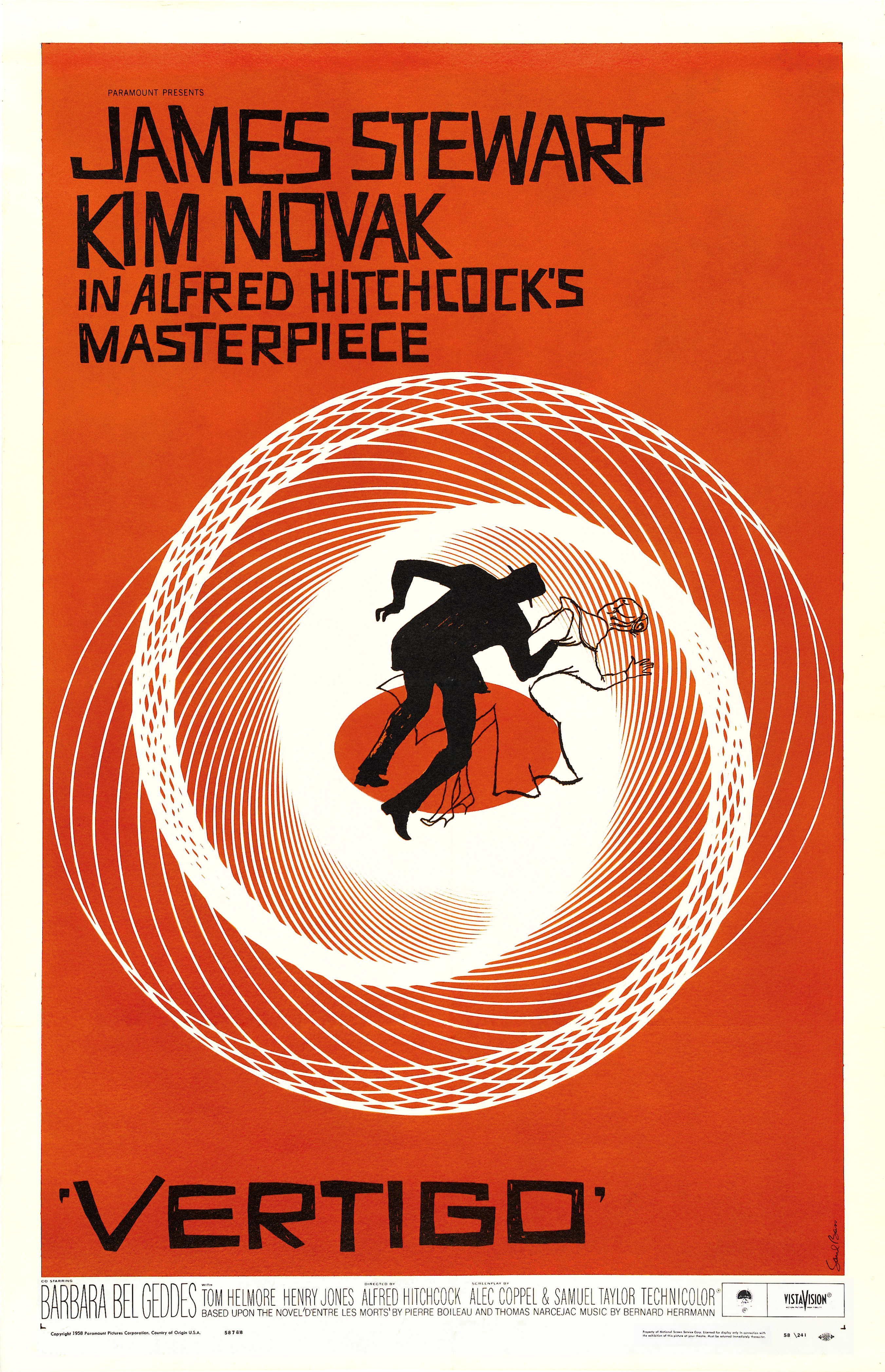
projects:
events:
-
Thursday, March 20, 2025 - 12:00 - 13:00
-
Tuesday, April 26, 2022 - 03:30 - 16:30
-
Friday, April 1, 2022 - 18:00 - Monday, April 4, 2022 - 12:00
-
Friday, April 1, 2022 - 09:00 - Sunday, July 31, 2022 - 17:00
-
Wednesday, December 8, 2021 - 21:45 - 22:45
-
Friday, November 5, 2021 - 13:45 - 16:00
-
Tuesday, October 12, 2021 - 13:30 - 14:15
-
Monday, June 28, 2021 - 10:00 - 11:00
-
Thursday, March 19, 2020 - 12:00 - Sunday, March 22, 2020 - 00:00
-
Friday, October 25, 2019 - 21:00 - Sunday, October 27, 2019 - 23:00
-
Thursday, August 1, 2019 - 12:00 - Wednesday, October 2, 2019 - 00:00
-
Friday, April 26, 2019 - 21:30 - Saturday, April 27, 2019 - 00:30
-
Friday, March 29, 2019 - 23:00 - Sunday, March 31, 2019 - 21:00
-
Sunday, June 24, 2018 - 12:00 - Saturday, July 7, 2018 - 22:00
-
Friday, June 22, 2018 - 12:00 - Sunday, September 30, 2018 - 20:00
-
Saturday, June 9, 2018 - 12:00 - 19:00
-
Saturday, May 19, 2018 - 15:00 - Sunday, November 11, 2018 - 22:00
-
Sunday, April 22, 2018 - 13:00 - 23:00
-
Friday, April 13, 2018 - 22:00 - Sunday, April 15, 2018 - 17:00
-
Friday, January 26, 2018 - 09:30 - 11:00
-
Saturday, July 1, 2017 - 03:00 - Sunday, August 27, 2017 - 03:00
-
Friday, May 26, 2017 - 12:00 - Saturday, May 27, 2017 - 15:00
-
Sunday, May 14, 2017 - 13:00 - 17:00
-
Sunday, April 30, 2017 - 20:00 - 22:30
-
Sunday, April 9, 2017 - 18:00 - 20:00
-
Tuesday, November 15, 2016 - 14:00 - 16:00
-
Tuesday, April 12, 2016 - 17:00 - 18:30
-
Tuesday, March 1, 2016 - 12:00 - Monday, June 6, 2016 - 21:00
-
Thursday, February 25, 2016 - 14:15 - 14:30
-
Tuesday, February 16, 2016 - 14:15 - Wednesday, February 17, 2016 - 00:45
-
Wednesday, December 2, 2015 - 22:00 - Sunday, December 6, 2015 - 22:00
-
Saturday, November 21, 2015 - 19:00 - 21:00
-
Friday, September 18, 2015 - 03:00 - Monday, December 7, 2015 - 02:59
-
Saturday, May 16, 2015 - 16:00 - 19:00
-
Friday, April 17, 2015 - 19:00 - Saturday, April 18, 2015 - 22:00
-
Wednesday, February 25, 2015 - 03:00 - Wednesday, March 25, 2015 - 03:00
-
Tuesday, November 11, 2014 - 20:00 - Wednesday, November 12, 2014 - 00:00
-
Monday, September 22, 2014 - 12:00 - Sunday, September 28, 2014 - 02:00
-
Wednesday, July 30, 2014 - 12:00 - Monday, August 4, 2014 - 01:00
-
Tuesday, July 22, 2014 - 13:00 - Friday, July 25, 2014 - 19:00
-
Wednesday, March 19, 2014 - 21:00 - 22:00
-
Saturday, March 15, 2014 - 12:00 - Friday, March 28, 2014 - 12:00
-
Thursday, March 6, 2014 - 19:00 - 21:00
-
Tuesday, February 25, 2014 - 14:00 - 15:15
-
Friday, October 25, 2013 - 11:30 - Saturday, October 26, 2013 - 19:00
-
Saturday, September 28, 2013 - 20:30 - 23:30
-
Monday, September 16, 2013 - 03:00 - Wednesday, September 25, 2013 - 02:59
-
Sunday, May 26, 2013 - 18:00 - 21:00
-
Saturday, May 25, 2013 - 14:00
-
Thursday, May 9, 2013 - 18:00
-
Thursday, February 21, 2013 - 22:00 - Friday, February 22, 2013 - 00:00
-
Thursday, February 7, 2013 - 17:00 - 19:00
-
Tuesday, December 4, 2012 - 22:30
-
Sunday, September 30, 2012 - 21:30 - Monday, October 1, 2012 - 00:00
-
Wednesday, September 26, 2012 - 20:00 - Thursday, September 27, 2012 - 00:00
-
Saturday, August 25, 2012 - 16:00 - 19:00
-
Friday, June 1, 2012 - 14:00 - 16:00
-
Friday, February 17, 2012 - 21:00
-
Thursday, January 26, 2012 - 15:00 - 17:00
-
Friday, November 18, 2011 - 21:30 - Monday, November 21, 2011 - 00:00
-
Sunday, September 18, 2011 - 13:00
-
Saturday, September 17, 2011 - 13:00 - 17:00
-
Saturday, June 25, 2011 - 13:00
-
Thursday, June 23, 2011 - 22:00
-
Wednesday, June 22, 2011 - 22:00
-
Thursday, May 5, 2011 - 22:00
-
Thursday, October 28, 2010 - 22:00 - Friday, October 29, 2010 - 01:00
-
Tuesday, June 1, 2010 - 21:00 - Wednesday, June 2, 2010 - 00:00
-
Friday, April 16, 2010 - 23:00
-
Wednesday, March 31, 2010 - 22:00 - Thursday, April 1, 2010 - 00:00

